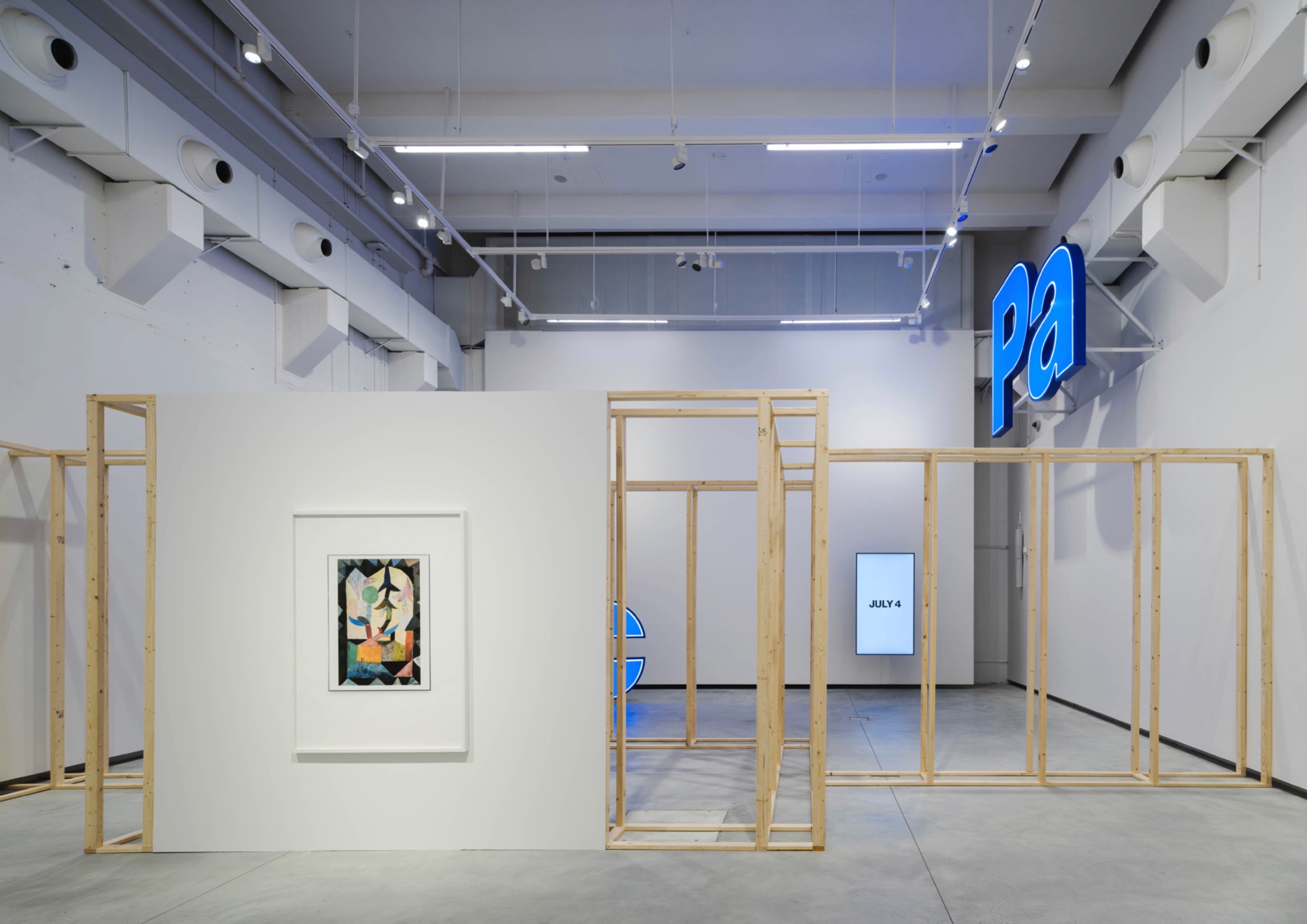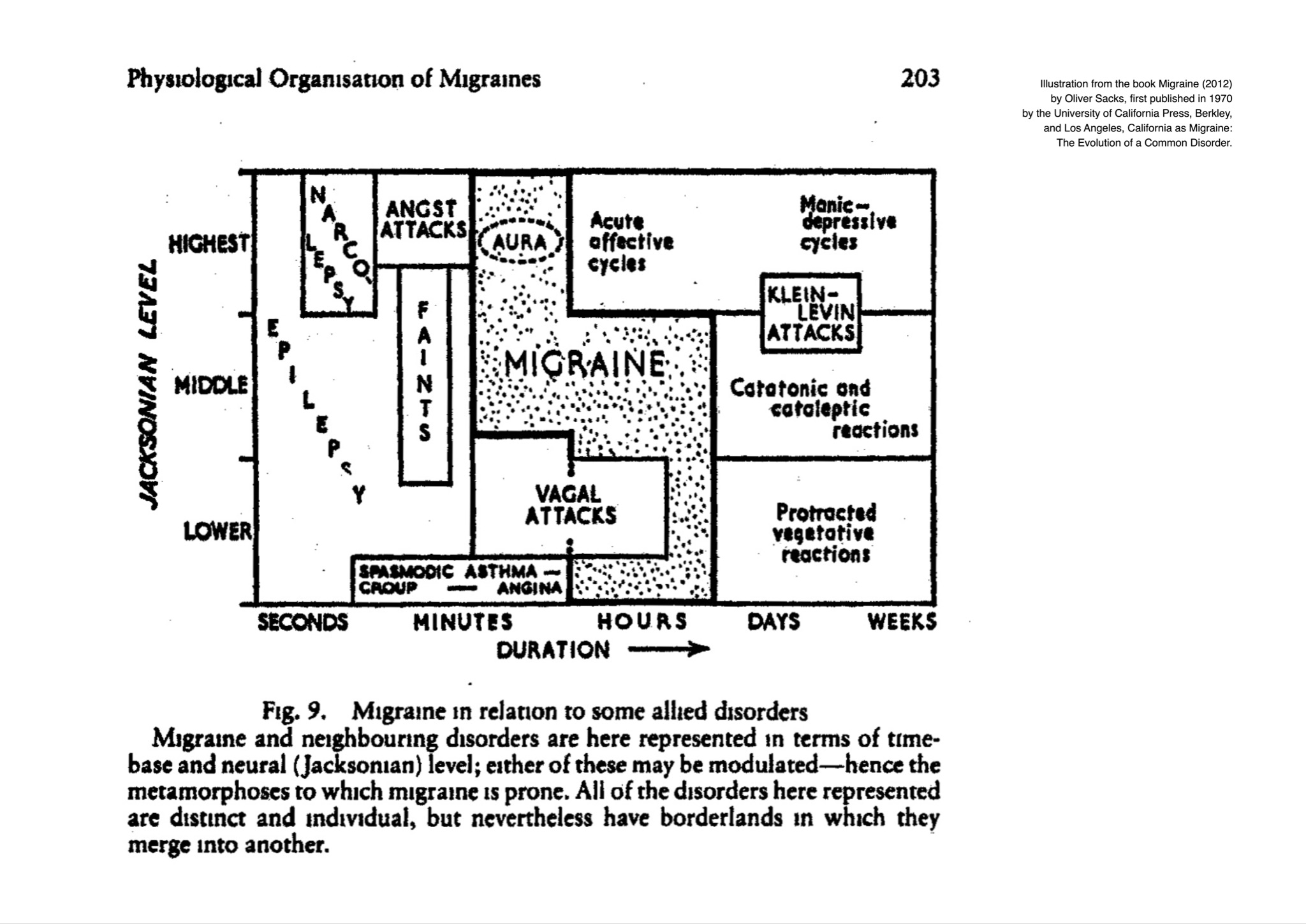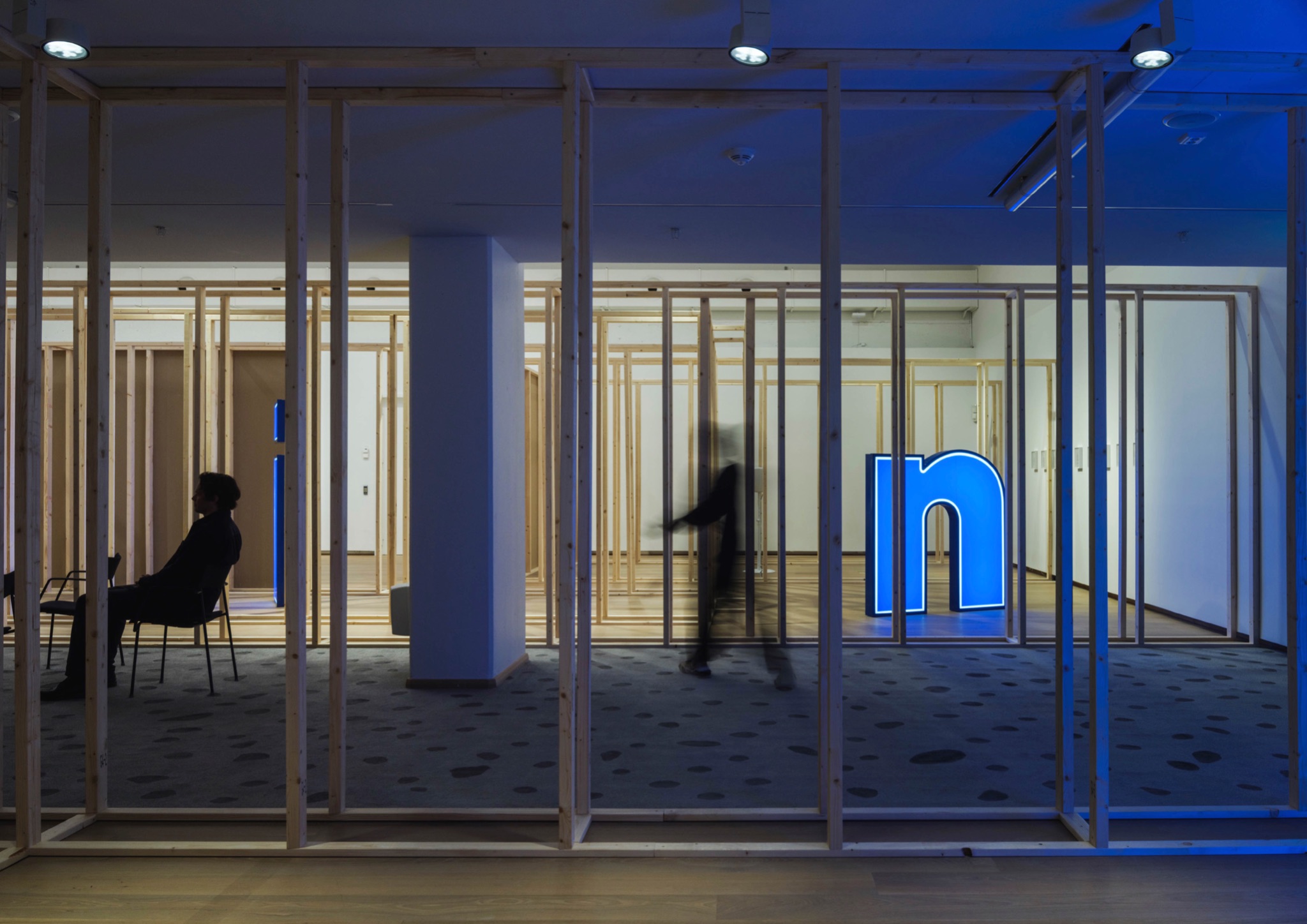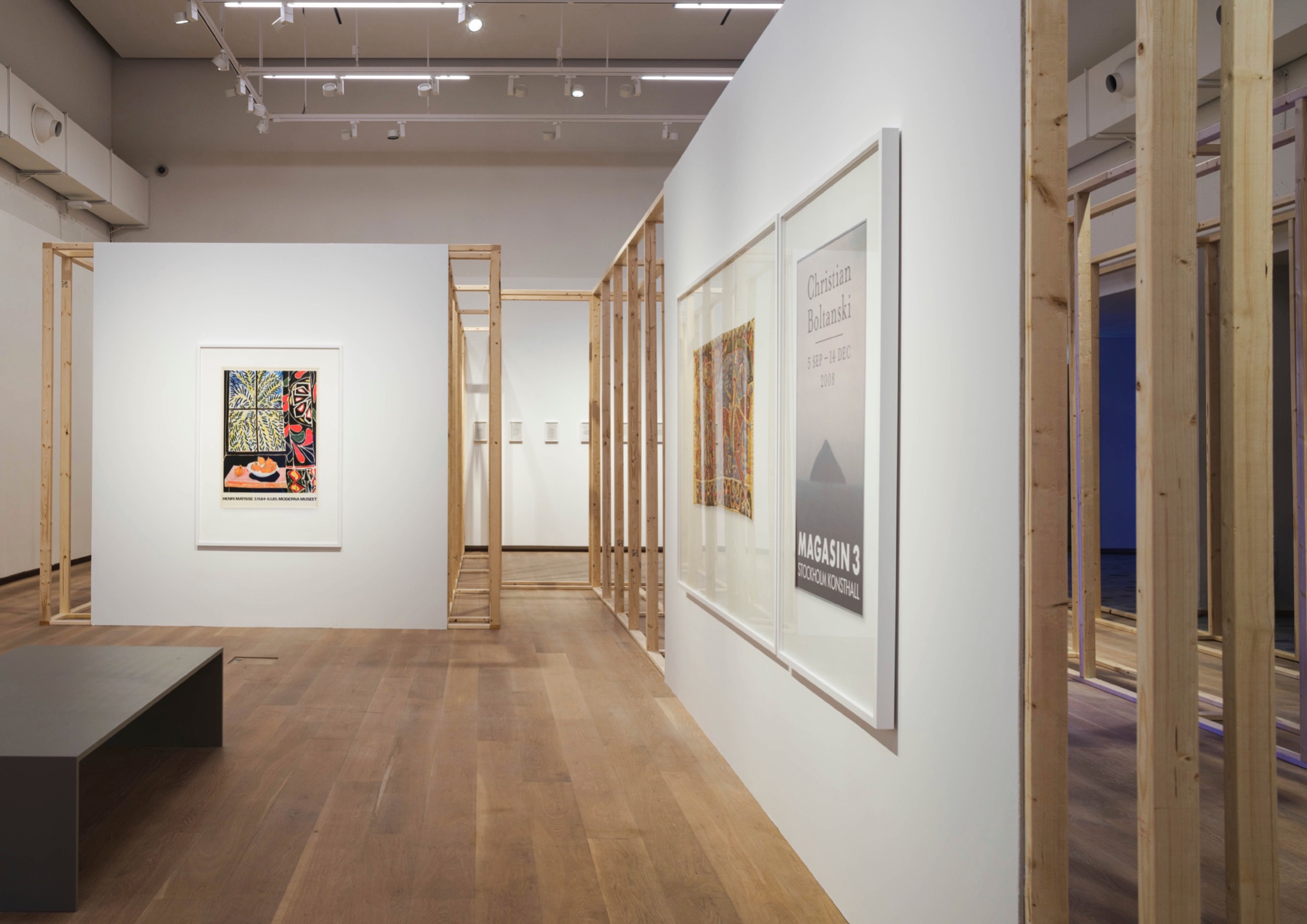Empathetic Suspense and Release in Lisa Tan’s “Dodge and Burn”


In Lisa Tan’s exhibition Dodge and Burn, architecture, sound, moving images, large blue-lit letters in various states of suspense and recline, and a series of photographic works and letters coalesce to play out the spatial sensations of a migraine. Having grown up close to severe chronic illness, I have always been curious to see how an exhibition might tackle chronic physical and neurological conditions, wherein defining characteristics often operate with varying intensity, both debilitating and haunting in their unpredictable synchronicity.
The exhibition is based on a diagram by neurologist Oliver Sacks, whom the artist colloquially describes as the “John Berger of neurology,” from 1970. The exhibition’s design is itself attributed to a work titled ‘Promise or Threat’ (2023) a physical construction of Sacks’ “map,” it serves as the exhibition’s central conduit, wherein rooms take the names of the varying neurological conditions associated with migraines—guiding the reader through its manifold manifestations: ‘protracted vegetative reactions,’ ‘acute affective cycles,’ ‘vagal attacks,’ ‘angst attacks,’ narcolepsy,’ and ‘faints’ to name a few.

Walls are both finished and unfinished, playing host to works interrogating language and varying states of suspense and stasis. Collectively, the works evoke the stifled and anticipatory atmosphere of both an airport and a doctor’s waiting room. The latter is accentuated by the inclusion of Tan’s series ‘Letters from Dr. Bamberger’ (2011-2021), in which the artist is repeatedly told that she is in good health based on physical exams spanning ten years, and ‘Waiting Room series’ (2019, 2023), in which the artist reproduces framed art found in the waiting rooms of three separate physicians: two psychoanalysts and a neurologist. The photographic works act as liminal doubles, both alluding to and gently poking fun at the art historical notion of an association between the aura of an “original” work of art and sensory overwhelm (author’s note: for leisure, look up Stendhal syndrome). By doing so, Tan accentuates the physical and emotional limbo that spaces designed for waiting embody, despite their best attempts to present themselves as innocuous.
The initial feeling of the space—as if hearing a language that you recognize but do not understand, or are not fluent in—is further imbued by the three-channel installation of sound belonging to ‘Dodge and Burn’, the eponymous video work which plays over 20 minutes on a 30 minute loop. In the 10-minute intervals, the sound translates as the low-frequency hum of an airplane interior, while during the 20-minute work, the artist’s voice sounds faint from the center of the exhibition’s nervous system (which in Sacks’ diagram is illustrated with a circle around the word “aura”). While the exhibition’s first impression may be of “stillness”, the soundtrack emerges almost unnoticeably, and carries with it the promise of forward momentum, moving you towards the center, (and perhaps into “aura”). These interactive sensations gain further traction with the placement of the large, blue-light emitting letters which make up a discombobulation of the ‘Panasonic’ company logo (titled ‘Pa’ (2023)). The work activates our instinct as viewers to console the (custom-made) signage into some form of legible manual, to find one’s way in an airport, for example, but in Tan’s blueprint, they remain peripheral yet omnipresent harbingers.

The title of the exhibition and the video installation ’Dodge and Burn’ refers to a photographic technique that can manipulate the exposure of select areas on a photographic negative print to decrease and increase different areas of the image. The installation takes the form of both one vertically installed screen leading up to, and one horizontally installed video screen in the center of the space, narrating and depicting a series of attempts over several years to capture the 4th of July fireworks over Los Angeles from a commercial airliner descending over the vast Californian city. Described as “a way to grapple with sensory overload and varied proximity of an individual to violence and exploitation in current times” the work is inviting by way of its subjective and often deadpan voice-over, which is superimposed over the various footage the artist has captured from the air and on the ground on these consecutive journeys.
As a viewer, one is quickly invested in Tan’s plight as she employs herself and a friend to capture the fireworks, which from the sky appear more like explosions and light patterns associated with violent clashes. On the ground, they are some of Los Angeles’ most dispossessed neighborhoods, in which historical riots after the deaths of black men such as Rodney King who was murdered by police brutality in 2012 have played out. One of the longest lingering images in the 20-minute video is of a golden sunset behind a rippling American flag, while the sound of fireworks fully takes on the character of such violent confrontations between the oppressed and policed and those who oppress and police them. It produces the sensation of foreshadowing unseen violence that could occur after the sun has set, as the flag and what it represents loses any semblance of translucency. I scribble down a thought, also affected by my incumbent consumption of the American election cycle via podcasts, and recent three-month residency in the US: “How to feel safe with the sound of fireworks in America?” To me, the dislocated sound of fireworks feels equally representative of the constant state of alertness to one’s physiological symptoms when living with a chronic condition, and when one’s neurological faculties are inflamed and the body’s multilateral vital functions in combat with itself.


Accompanying the work’s allusions to tragedy, the artist’s compassionate sense of humor is near at hand throughout, as varying distractions and technical issues repeatedly sabotage the artist’s desired shot. Amongst these are an unprecedented change in the flight path, and Tan falling into conversation with her in-flight neighbor, whose self-described line of work as a cuddle therapist tickles her curiosity. Tan enlightens us by proxy what this exceptionally contemporary form of pseudo-medical treatment entails in practice, and who the people who seek it out are. In short, the cuddle therapist is paid to hold her clients, providing them an experience of physical intimacy which is, in essence, asexual, and described as an attempt to alleviate the alienation tied to the demands of their lines of work, and their main consumption of other bodies being through the internet. While listening to the detailing of this uniquely modern form of unlicensed therapy, Tan’s gaze drifts to a dog seated on a row across from her, which is most likely also serving as another form of therapeutic companion, and as a viewer, we realize that these unwitting antagonists have foiled any hope that she captures the fireworks this time to her overarching objective.
Through Tan and curator Therese Kellner’s brilliant curation and positioning of works throughout, Tan’s interest in different states of affect and sensory overload, and how we as (she terms it) ‘linguistic beings’ struggle when they cannot be named or consoled into a recognizable or manageable space or purview. Their choice to let different works and series ‘dodge and burn’ concerning each other—without any of them becoming fixed in an increase or decrease of exposure—creates an exceptional exhibition experience that is charged with empathetic suspense and release.
Lisa Tan Dodge and Burn is on view until 11 February 2024 and the publication ‘Dodge and Burn’ will be launched on February 8th, accompanied by a conversation between the artist and curator James Taylor-Foster, both at Accelerator Frescativägen 26A, 114 18 Stockholm, Sweden.
You Might Also Like
Wetterling Brought New York to Stockholm in the 80s and 90s
“Too Much of Everything” an Interview with Matthias van Arkel
What's Your Reaction?
Håkon Lillegraven (b. 1992) is a curator, art mediator and writer, based in Oslo. Educated in culture, criticism, and curation at Central Saint Martins in London, he has a special interest in queer, norm-critical, and performative practices. He was Curator and Head of Mediation at Fotogalleriet and is currently Curator of Education and Programmes at the National Museum, both in Oslo. He was the Managing Editor of 'Conversations on Photography' published by Fotogalleriet and Kehrer Verlag and the artist publication 'And Their Spirits Live On' by Marianne Heier. Lillegraven writes regularly for Kunstkritikk - Nordic Art Review, and has contributed texts to C-print, ArtNotes, Fotografi, Billedkunst, Morgenbladet, BLIKK, and the discursive platform Karmaklubb*.

